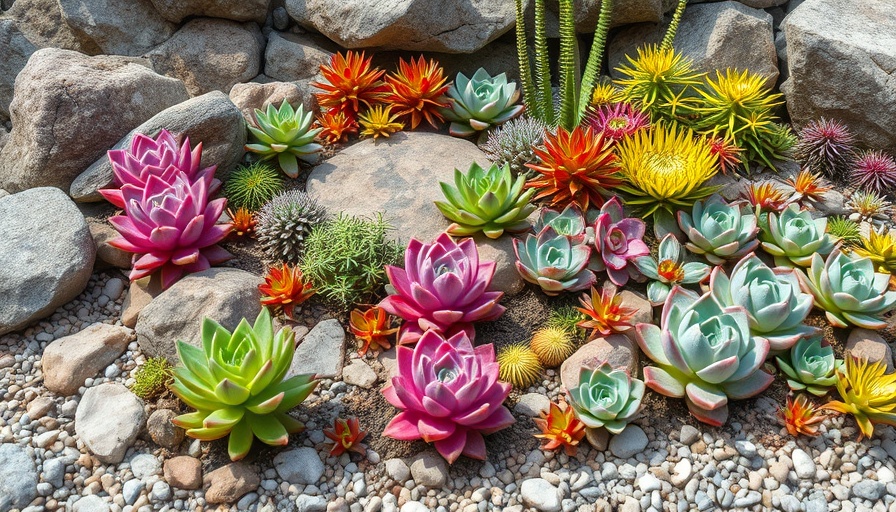
A Creative Approach to Xeriscaping
In the arid climate of Colorado, Ryan Harter has turned his yard into a vibrant oasis that showcases the beauty and utility of xeriscaping. By replacing a traditional Kentucky bluegrass lawn with a stunning array of drought-resistant plants, Harter exemplifies how eco-friendly gardening can flourish in a water-scarce environment. His garden not only reduces water consumption, but it also provides habitats for local pollinators.
Understanding Xeriscaping
Xeriscaping, a term derived from 'xeros' meaning dry, focuses on designing landscapes that require minimal irrigation. This sustainable home design strategy is particularly beneficial in semi-arid regions like Castle Rock, which averages just 19 inches of rainfall per year. Harter’s garden, brimming with vibrant perennials and strategically placed boulders, illustrates the value of creating a yard that thrives without heavy water dependency.
The Pollinator Garden Effect
Diverse planting in Harter's garden not only enhances its aesthetic appeal but also contributes significantly to local biodiversity. By incorporating plants like Agave neomexicana and Goldhill golden-aster, he attracts hummingbirds and bees that are crucial for pollination. Homeowners looking to make a sustainable impact can take cues from Harter’s design by selecting native plants that support local wildlife while requiring less upkeep and water.
Tips for Transforming Your Yard
For eco-conscious homeowners wanting to implement similar transformations, here are some actionable insights:
Start with a Plan: Assess your space and decide on features you want to include, such as rock gardens or waterwise perennials.
Choose Proper Plants: Select drought-tolerant species that thrive in your climate to ensure low maintenance.
Incorporate Natural Landscaping: Use local stones and natural materials to create interest and structure in your garden.
The Future of Eco-Friendly Gardening
As climate awareness increases, the shift towards sustainable gardening practices like xeriscaping is rapidly gaining traction. The techniques showcased in Ryan Harter’s garden serve as a blueprint for creating gardens that honor both the environment and aesthetics, paving the way for more homeowners to embrace eco-friendly gardening.
Taking small steps in transforming traditional landscapes into xeric havens can lead to significant improvements in water conservation and ecological health. With a little planning and creativity, any homeowner can cultivate a beautiful garden that thrives with minimal resources.
 Add Row
Add Row  Add
Add 




Write A Comment